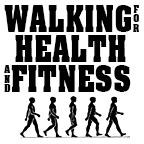How Many Push-ups Should I Be Able to Do?
The question I get asked often is, “how many push-ups should I be able to do?”. In this day and age of “bigger is better” challenges, one the most often Googled challenges is being able to do 100 push-ups.
While the number 100 is impressive, I say it’s much less than that. In fact, recent research shows that a person that can do 40 push-ups lowers their risk of heart disease by 96%!
Now with this new information dispelling the daunting task of performing 100 push-ups, you can quickly work up to the 40 push-ups needed for an outstanding health benefit.
Why do push-ups
New research* from the Harvard T.H. Chan School of Public Health says their report is the first to show how the number of push-ups a man can do could be an easy, no-cost method to assess cardiovascular disease risk.
They found that middle-aged men who can do 40 push-ups at a time have a 96% reduced risk of developing cardiovascular disease and other related ailments, such as heart failure, compared to those who can complete no more than 10 push-ups.
The Study
Researchers reviewed health data from 1,104 active male firefighters taken annually from 2000 to 2010. At the start of the study, the average participant was about 40 years old with an average body mass index of 28.7. The firefighters performed as many push-ups as they could, and their treadmill tolerance was also tested.
By the end of the study period, 37 participants suffered from a heart disease-related condition — and 36 of those men weren’t able to log more than 40 push-ups in the initial test. The results of the treadmill test were not as clearly linked to heart disease diagnoses.
How to do a proper pushup
Align your hands under your body and picture yourself pushing a large box or another person. Position your hands just slightly wider than shoulder width to give you the maximum effort of the force you apply.
Slowly bend your arms and lower yourself towards the floor in a carefully controlled fashion.
When your elbows are at a 90-degree angle, push yourself back up to the starting position.
Keep your core muscles engaged and your back “flat” and in a straight line.
Don't allow yourself to touch the floor with your body or lock your elbows when you get to the top of the move - this is resting and prevents you from realizing the full benefit of the move.
Use a controlled movement at all times to avoid relying on momentum to complete the move.
Do as many controlled repetitions as your body allows. You'll know when you're done because your back will sag, you’ll lift your butt up into the air, or your body will just tell you that it is done.
Push-ups for beginners
Beginning a pushup routine is easy, performing one for the first time is the tough part!
If you are new to doing push-ups and cannot do a proper pushup, you can begin with these two suggestions to modify a push-up
Option 1: Push off from an elevated surface such as a box, the back of a chair, or a railing. Keep your body in alignment and keep your core muscles engages and back flat and in a straight line.
Option 2: While on the floor, bend at your knees and push off the floor. Remember to keep your body in alignment and keep your core muscles engages and back flat and in a straight line.
What Muscles do Push-ups work?
Push-ups are the workhorse of body weight fitness exercises in that they work every major muscle group in your body. This is one reason why they are so difficult to perform at first. If one of your muscle groups are weak, it will be revealed when you attempt a pushup.
Chest muscles (Pectoralis)
Shoulders (Deltoids)
Back of your arms (Triceps)
Front of the arm (Biceps)
Abdominal muscles
The “wing” muscles directly under your armpit (Serratus Anterior)
Back muscles (Rhomboid, Trapezius, and Latissimus Dorsi)
Buttocks (Gluteus Maximus and Medius)
Lower legs (Hamstrings, Quadriceps, Calf, Shin Muscles)
Top 5 benefits of push-ups
It’s Free: Push-ups fatigue major and minor muscle groups. This provides the same benefits as a traditional full-body exercise performed at the gym.
Save Time: Five minutes of doing push-ups will give you a full-body workout. You can quickly change hand and feet placement to target muscles from a different angle.
Increase Functional Strength: Just about every muscle in your body is used in the execution of this exercise.
Stretch Muscles for Health and Vitality: Your back and biceps get fully stretched doing the pushup movement. This leads to a solid and attractive appearance.
Boost Your Cardiovascular System: Your heart works harder when you engage large muscle groups, which leads to a reduction in stored body fat.
READ MORE: 11 Benefits of Pushups for a Stronger Body
Here’s Your Push up Routine
Begin doing push-ups every day.
Remember to use proper form, use a controlled movement (slow and steady), don’t “cheat” just to say you completed more than you can.
Do as many as you can in one set.
Rest 30-90 seconds
Start the next set and match the first sets number
Rest 30-90 second
Start the next set and match the number of the first set
Going forward… you decide how many to do for each set and how many sets per day.
Keep the goal of eventually reaching 40 push-ups in one set in mind!
How walking and push-ups supercharge your workout
My absolute favorite activity to boost the intensity of my walking workout is push-ups.
Some benefits of doing push-ups are that they increase functional strength, enhance your cardiovascular system, increase whole-body definition, prevent lower back injuries, and improve your posture.
When you’re out on your next walk, stop at various points along the way and perform a set of push-ups. Then get up and continue walking. The increase in heart rate caused by performing the push-ups will increase the number of calories you burn during your walk and increase your overall muscle strength and fitness level.
Push-ups FAQ
How many push-ups a day should I be able to perform?
New research, as cited above, suggests that being able to perform 40 push-ups can reduce the risk of cardiovascular disease by 96%!
Why is doing a pushup so difficult?
While performing a pushup you work the major muscle groups in your body. So, as a result, if you have a weakness in one area, it will be revealed when performing the pushup. The good news is that push-ups will quickly strengthen your weak muscle group and allow you to have an overall stronger body.
Are there Variations to performing a pushup for beginners?
Yes, as shown above, you can push off of an elevated surface such as a box, the back of a chair, or a railing. You can also begin the pushup from the floor position while bending at the knee.
Should I do push-ups every day?
Yes! This one movement, when you reach the “magic number” of 40 at a time has been shown to decrease the risk of cardiovascular disease by 96%. I’d say the sooner you can hit this number the better!
Walk on,
Frank S. Ring
Author: Walking for Health and Fitness, Fitness Walking and Bodyweight Exercises, and Walking Inspiration.
Your Next Step:
I believe by now the question of “how many push-ups should I be able to do” has been completely answered and it’s time to get moving, or in this case, pushing!
Start now and set a goal of being able to complete 40 push-ups at one time. Pick a future date that you will accomplish the goal and start right now.
With determined action and a game plan in mind, you will be amazed at how strong you will become and how quickly you will get to the 40 pushup mark.
*The study was published in JAMA Network Open.






